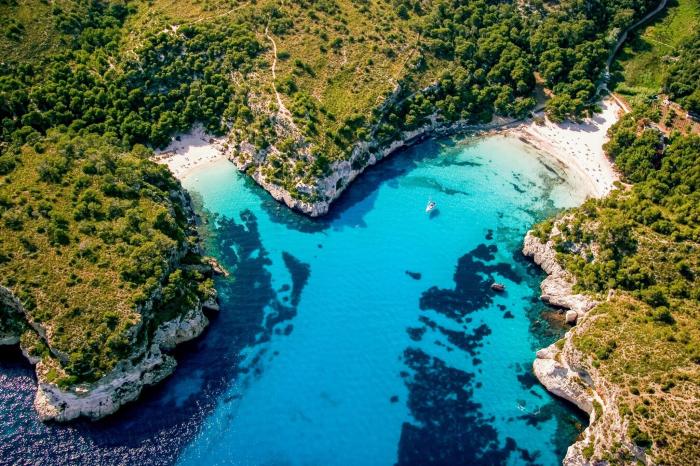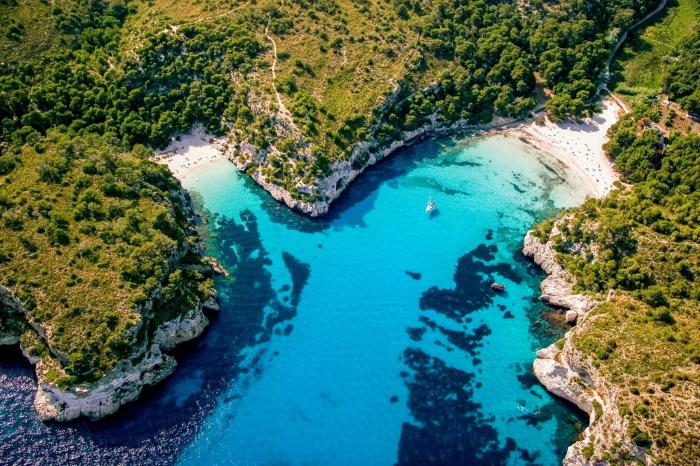Best road trips in Pakistan set the stage for an unforgettable adventure. From bustling cities to breathtaking mountain passes, Pakistan’s roads offer a diverse tapestry of experiences. Discover historical sites, immerse yourself in local culture, and conquer stunning landscapes on epic journeys across the country.
This comprehensive guide delves into planning the perfect road trip, exploring top destinations, and offering practical advice for a safe and enjoyable journey. We’ll cover everything from essential documents to budget-friendly tips, ensuring you’re well-equipped for your Pakistani road trip.
Introduction to Road Trips in Pakistan

Pakistan’s vast landscapes, rich history, and vibrant culture make it a dream destination for road trips. From the snow-capped Himalayas to the sun-drenched deserts, and from ancient cities to bustling bazaars, the country offers an unparalleled journey of discovery. Exploring these diverse regions by car unlocks a deeper appreciation for the nation’s beauty and its people.Road trips in Pakistan are more than just a mode of transport; they’re a way of experiencing the country’s soul.
They allow for a slower pace, fostering a deeper connection with the local communities and the environment. The journeys are often filled with unexpected encounters, captivating sights, and heartwarming interactions, making them truly unforgettable.
Historical and Cultural Significance of Road Travel
The historical importance of roads in Pakistan is undeniable. Ancient trade routes, connecting distant settlements, were pivotal in the region’s development. These routes, often meticulously constructed, served as conduits for cultural exchange, religious pilgrimage, and economic prosperity. The legacy of these historic roads is still visible in the country’s architecture, customs, and the stories of its people.
Modern road travel has continued this tradition, providing a platform for contemporary cultural interaction and exploration.
Diverse Landscapes and Experiences
Pakistan’s topography is remarkably varied, offering a tapestry of experiences for road trip enthusiasts. The northern regions boast stunning mountain ranges, lush valleys, and glacial lakes, perfect for trekking and scenic drives. The country’s central areas display ancient cities, vibrant markets, and picturesque countryside, offering insights into Pakistan’s rich history and culture. The southern regions, from the deserts to the coastlines, reveal the stark beauty of the land, presenting unique challenges and rewards for those who venture out.
Pakistan’s stunning landscapes offer incredible road trip adventures, from the towering mountains to the vibrant cities. While planning my next trip, I came across an interesting scheme in the Italian region of Molise, offering financial incentives to residents italian region molise pay residents scheme. It got me thinking about how different countries approach supporting local tourism and the potential for similar initiatives in Pakistan to boost the road trip sector.
The varied terrains and historical sites make Pakistan a must-see destination for road trip enthusiasts.
- Northern Pakistan: The Himalayas offer breathtaking views, challenging drives, and opportunities for trekking and camping. The scenic beauty of Hunza Valley, the grandeur of the Karakoram Highway, and the serenity of lakes like Saiful Muluk are unforgettable. These areas are renowned for their high-altitude landscapes and the unique culture of the local communities.
- Central Pakistan: This region unveils a captivating blend of history and culture. Explore ancient cities like Taxila, visit the vibrant markets of Multan, and delve into the rich heritage of the region. The diverse architecture and traditions of the local communities make this a crucial part of a road trip.
- Southern Pakistan: From the Thar Desert’s vast expanse to the coastal beauty of Balochistan, southern Pakistan presents a stark contrast to the northern regions. The desert landscapes and the coastal scenery, along with the rich cultural heritage of the local people, are truly unique.
Planning a Road Trip
Effective planning is crucial for a smooth and enjoyable road trip in Pakistan. Researching the best routes, considering the time of year, and making accommodations for potential challenges are all essential steps. Acclimatization to the altitude, weather, and local customs will contribute to a comfortable and rewarding experience. Ensure you have the necessary permits and documents, and understand the local laws and regulations.
| Region | Best Time to Visit | Key Considerations |
|---|---|---|
| Northern Areas | Spring and Autumn | Altitude sickness, weather conditions, permits |
| Central Areas | All year round (adjust for monsoons) | Traffic, local customs, accommodation availability |
| Southern Areas | Winter | Extreme heat, desert conditions, safety precautions |
Top Destinations and Routes
Pakistan’s diverse landscapes offer incredible road trip experiences. From the majestic Himalayas to the vibrant cities, the country boasts a variety of destinations perfect for journeys of varying lengths and interests. Exploring these routes allows you to immerse yourself in the rich culture, stunning scenery, and warm hospitality of the nation.
Popular Road Trip Destinations
Pakistan offers a plethora of captivating destinations for road trips. Five of the most popular destinations cater to diverse interests, ranging from cultural immersion to adventure and nature. Each destination offers unique attractions and activities, ensuring an unforgettable experience.
Northern Areas: Hunza and Skardu
The northern areas of Pakistan, including Hunza and Skardu, are renowned for their breathtaking landscapes and challenging terrain. The stunning mountain scenery, towering peaks, and serene valleys are a visual feast. These areas also offer thrilling trekking opportunities and panoramic views, making them ideal for adventurers and nature enthusiasts.
- Hunza Valley: This valley, nestled amidst the Karakoram Range, is a paradise for hikers and photographers. The scenic beauty is complemented by charming villages, traditional architecture, and opportunities for trekking and exploring local markets.
- Skardu: Known as the “Gateway to the Himalayas,” Skardu offers a mix of adventure and relaxation. Its proximity to high-altitude passes and glaciers allows for trekking, jeep safaris, and exploring the Deosai Plains, a high-altitude plateau known for its stunning meadows and wildlife.
Lahore and the Punjab Region
The Punjab region, with its historical cities and vibrant culture, offers a fascinating insight into Pakistan’s past and present. Lahore, the capital of Punjab, is a bustling metropolis with a rich history, and surrounding areas offer charming towns and villages.
- Lahore: This city is a treasure trove of historical monuments, including the Badshahi Mosque, Wagah Border ceremony, and the Lahore Fort. It also offers a vibrant cultural scene with bustling markets, delicious food, and traditional crafts.
- Faisalabad and Multan: These cities offer a glimpse into the agricultural heartland of Punjab. They are known for their textile industries, historical sites, and local markets, providing an immersive experience into the local culture.
Swat Valley
The Swat Valley is a picturesque valley in the Khyber Pakhtunkhwa province, known for its lush greenery, charming towns, and breathtaking scenery. It is a perfect destination for nature lovers and those seeking a tranquil escape.
- Swat Valley: This valley offers a tranquil escape with stunning views, lush green valleys, and numerous trekking trails. Exploring the local markets and experiencing the vibrant culture are other highlights of a trip to this area.
Karachi and Coastal Areas
The coastal areas of Pakistan offer a unique blend of urban excitement and seaside relaxation. Karachi, the largest city, is a bustling metropolis with a rich cultural heritage. Coastal towns offer stunning beaches and opportunities for relaxation and water sports.
- Karachi: This bustling metropolis is a hub of activity with vibrant markets, delicious food, and a rich cultural scene. Visiting historical sites and exploring the city’s diverse neighborhoods are integral to experiencing Karachi.
- Coastal towns: Coastal towns like Ormara and Gwadar offer a chance to relax on the beach, enjoy water sports, and experience the unique charm of the coastal environment.
Recommended Itineraries and Duration
- 3-Day Trip: Ideal for a quick getaway, a 3-day trip can focus on a single destination, such as Lahore, exploring its historical sites and cultural attractions.
- 7-Day Trip: A 7-day trip allows exploration of a region, like the Swat Valley, encompassing its natural beauty, local culture, and historical significance.
- 14-Day Trip: A 14-day trip is perfect for traversing the northern areas, including Hunza and Skardu, allowing for more detailed exploration of the mountainous terrain and the various trekking opportunities.
Destination Comparison Table
| Destination | Duration | Key Attractions | Highlights |
|---|---|---|---|
| Hunza/Skardu | 7-14 Days | Mountain views, trekking, high-altitude passes | Adventure, stunning scenery |
| Lahore/Punjab | 3-7 Days | Historical sites, local markets, food | Culture, history, vibrant atmosphere |
| Swat Valley | 3-7 Days | Lush scenery, trekking, local culture | Nature, relaxation, local experiences |
| Karachi/Coastal | 3-7 Days | City attractions, beaches, water sports | Urban exploration, relaxation, coastal beauty |
Planning Your Trip
Road trips in Pakistan offer an unparalleled opportunity to experience the country’s diverse landscapes and vibrant culture. However, careful planning is crucial for a safe and enjoyable journey. Understanding the variables involved, from the best time of year to essential documents, ensures your trip goes smoothly.Thorough preparation minimizes potential hiccups and allows you to maximize your time exploring. This section provides a detailed guide to planning your Pakistani road trip, covering crucial aspects like time of year, budget considerations, and vehicle suitability.
It also includes a list of essential documents, packing tips, and safety precautions.
Time of Year and Budget
Pakistan’s diverse climate necessitates choosing the appropriate time of year for your trip. Summer months (May-September) are ideal for exploring northern regions like Hunza and Gilgit-Baltistan, but be prepared for potentially high temperatures and crowds. The winter months (November-March) offer a chance to experience the snow-capped mountains but may involve challenging road conditions and limited accessibility to certain areas.
Consider the climate and your tolerance for heat or cold when selecting your travel dates. Budgeting is essential; factor in accommodation costs, food, fuel, and potential unexpected expenses. Researching local prices for accommodations, food, and fuel can help you create a realistic budget.
Vehicle Suitability
The condition of Pakistan’s roads varies significantly, especially in remote areas. A sturdy vehicle with good ground clearance is essential, particularly if you plan to travel through mountainous regions. Consider a vehicle with sufficient fuel capacity for long distances, and ensure it’s properly maintained before embarking on your trip. Check the vehicle’s condition and get necessary repairs or maintenance done.
Necessary Documents and Permits
Thorough documentation is vital for a smooth trip. Ensure you have a valid passport, visa (if required), and driver’s license. Depending on your route, you may need specific permits or authorizations for certain areas. Contact local authorities or travel agencies for details.
- Passport:
- Visa (if required):
- Driver’s License:
- Vehicle Registration:
- Insurance:
- Local Permits (if needed):
A valid passport with sufficient validity beyond your travel dates is crucial.
Ensure you have the necessary visa for the regions you plan to visit.
A valid driver’s license is mandatory for operating a vehicle in Pakistan.
Verify your vehicle registration and any necessary permits or insurance documentation.
Comprehensive travel and vehicle insurance is highly recommended.
Some regions might require specific permits, contact local authorities in advance.
Packing Essentials and Safety Precautions
Packing appropriately is key to a comfortable and safe trip. Pack light, but include essentials like warm clothing, rain gear, and comfortable walking shoes. Remember first-aid supplies, medications, and a portable charger.
- Clothing:
- First-aid Kit:
- Important Documents:
- Navigation Tools:
- Communication Tools:
Pack layers for varying weather conditions. Include warm clothes for potential cooler nights and mountains.
A comprehensive first-aid kit is crucial for treating minor injuries.
Keep copies of important documents like passports, visas, and driver’s licenses in a separate, easily accessible location.
A map, GPS device, or smartphone with offline maps are essential for navigation.
Ensure you have a way to communicate in case of emergencies, including a mobile phone with a charging bank.
Checklist Before, During, and After the Trip
A checklist streamlines the planning and execution process. Before the trip, finalize your itinerary, book accommodations, and gather all necessary documents. During the trip, stay informed about weather conditions and road closures. After the trip, document your experiences through photos and journal entries.
- Before the Trip:
- During the Trip:
- After the Trip:
Finalize itinerary, book accommodations, gather necessary documents, inform someone of your travel plans.
Stay updated on weather conditions, road closures, and potential safety alerts.
Document your experiences, share photos and stories with loved ones.
Accommodation and Food Experiences

Embarking on a road trip in Pakistan is more than just scenic drives; it’s a journey into the heart of the country’s vibrant culture. Beyond the breathtaking landscapes, delicious food, and warm hospitality await. Understanding the diverse accommodation and dining options along your route is crucial for a seamless and enjoyable experience.Exploring Pakistan’s culinary scene is a must-do during a road trip.
From bustling city markets to secluded mountain villages, every location offers a unique dining experience. Similarly, choosing the right accommodation is vital to ensuring your comfort and safety. Whether you seek a cozy guesthouse or a luxurious hotel, the options cater to a wide range of budgets and preferences.
Accommodation Options
Various accommodation options are available along the routes, ranging from budget-friendly guesthouses to luxurious hotels. The choice depends largely on your budget and the desired level of comfort and amenities. This variety ensures that travelers of all financial backgrounds can experience the beauty of Pakistan’s road trips.
| Accommodation Type | Cost Range | Amenities | Location |
|---|---|---|---|
| Budget Guesthouse | Low | Basic, often including shared bathrooms and basic rooms. | Typically located near city centers, allowing easy access to local attractions and markets. |
| Mid-Range Hotel | Moderate | Includes private bathrooms, Wi-Fi, and potentially a restaurant or cafe. | Located in towns and cities, offering a balance between budget and comfort. |
| Luxury Hotel | High | Extensive amenities such as multiple dining options, spas, swimming pools, and high-quality rooms. | Often situated in scenic locations, providing breathtaking views and a luxurious stay. |
Local Eateries and Restaurants
Finding authentic Pakistani cuisine is a highlight of any road trip. Local eateries and restaurants offer a chance to experience the diverse culinary traditions of the country. These establishments are often family-run businesses, offering warm hospitality and delicious home-style meals. From street food stalls to upscale restaurants, there’s a wide array of options to explore.
Unique Dining Experiences
Immerse yourself in the cultural food festivals celebrated across Pakistan. These festivals provide a chance to experience local cuisine and customs firsthand. For instance, the food stalls at the annual Swat Valley Festival offer a variety of regional specialties.
Cultural Food Festivals
Pakistan’s diverse culinary scene is best experienced through cultural food festivals. These festivals are often tied to religious celebrations, harvest times, or local traditions. These events offer a unique opportunity to sample regional delicacies and immerse yourself in the local atmosphere. They often include a range of food stalls, showcasing the regional diversity of Pakistani cuisine.
Safety and Practical Advice
Road trips in Pakistan offer breathtaking landscapes and vibrant culture, but responsible travel is paramount. Understanding local customs, driving regulations, and potential risks is crucial for a safe and enjoyable experience. This section provides essential safety tips and precautions to ensure a smooth and memorable journey.Careful planning and awareness of potential challenges can significantly enhance your safety and enjoyment during your road trip.
Thorough preparation, including understanding local customs, road conditions, and potential risks, is key to a positive experience.
Local Customs and Etiquette
Respect for local customs and traditions is vital. Pakistan is a diverse nation with various cultural norms. Modesty in dress, especially when visiting religious sites or rural areas, is appreciated. Engage with locals politely and respectfully. Avoid taking photographs without permission.
Learn a few basic greetings in Urdu to foster positive interactions. Always be mindful of local customs and norms to avoid any misunderstandings.
Driving Regulations and Road Conditions
Pakistan’s driving regulations can differ from international standards. Be aware of the specific rules of the region you’re visiting. Ensure your vehicle is in good condition and that you have the necessary documentation, including a valid driver’s license and insurance. Be prepared for varying road conditions, including narrow lanes, potholes, and potential traffic congestion. Drive cautiously, especially at night, and maintain a safe following distance.
Be aware of potential hazards and adjust your driving accordingly.
Essential Emergency Contacts and Resources
Knowing essential emergency contacts and resources can be life-saving in case of an accident or unforeseen circumstances. Maintain a list of emergency numbers, including local police, ambulance services, and your embassy. Have a reliable map and GPS device or app readily available, but be aware of potential connectivity issues. Inform someone of your itinerary and estimated return time.
Potential Risks and Mitigation Strategies
Accidents, theft, and scams are potential risks on any road trip. Be mindful of your surroundings and take precautions to mitigate these risks. Avoid carrying large sums of cash and keep valuables secure. Park your vehicle in well-lit and secure areas, and never leave your belongings unattended. If you are confronted by a potential threat, remain calm and try to de-escalate the situation.
Dealing with Unforeseen Circumstances
Unforeseen circumstances, such as mechanical breakdowns or natural disasters, are always a possibility. Have a comprehensive emergency kit with essential tools, spare parts, and supplies. Research local repair services and mechanics in advance. Be aware of the weather patterns and potential hazards in the region you’re visiting. Have a backup plan for unexpected events, such as contacting a trusted local or embassy.
Illustrative Examples of Road Trips
Embarking on a road trip in Pakistan is a journey into diverse landscapes and vibrant cultures. From the towering mountains of the Himalayas to the sun-drenched plains of the Sindh, the country offers a kaleidoscope of experiences waiting to be discovered. This section dives into specific road trip examples, highlighting the key attractions, unique accommodations, and unforgettable food encounters along the way.These detailed accounts aim to inspire your own Pakistan road trip adventures, providing a glimpse into the thrill and excitement that await.
A Himalayan Adventure: Gilgit-Baltistan
The Gilgit-Baltistan region, a land of towering peaks and breathtaking valleys, offers a truly unforgettable road trip experience. This region is a haven for mountaineers, trekkers, and nature lovers, with its stunning scenery and rich history.
- Key Attractions: The region boasts numerous glaciers, including the Baltoro Glacier, the second-largest glacier in the Karakoram Range. The Hunza Valley, with its lush green meadows and ancient villages, is another must-see. The stunning K2 mountain views are simply awe-inspiring. Visiting the local markets, witnessing traditional music performances, and learning about the region’s rich culture are all invaluable experiences.
- Accommodation: From basic guesthouses to charming homestays, you can find a variety of options in the region. Some hotels in major towns like Hunza or Skardu offer comfortable and convenient stays. Consider the local culture and hospitality when selecting accommodations, as it adds to the immersive experience. Expect varied pricing depending on the facilities and location.
Pakistan’s stunning landscapes make for incredible road trips, offering breathtaking views and vibrant culture. While exploring the scenic routes, I’ve always found myself fascinated by the serene rituals of Japanese tea ceremonies in Kyoto. Learning more about the meticulous practices and the profound history of these ceremonies through a guide like guide to japanese tea ceremonies kyoto adds a new dimension to appreciating the beauty of the world, and reminds me of the wonderful journey I experienced on a recent road trip through the Himalayas.
The sheer beauty of Pakistan’s mountains and valleys always takes my breath away.
- Food Highlights: The local cuisine in Gilgit-Baltistan is a delightful blend of Central Asian and Pakistani flavors. Try the succulent meat dishes, flavorful stews, and freshly baked breads. Don’t miss the opportunity to sample local fruits, particularly the vibrant apples and apricots, reflecting the region’s fertile valleys. Be sure to try the local yogurt, a common accompaniment to many meals.
A Cultural Immersion: Lahore to Swat
This route offers a taste of Pakistan’s rich cultural heritage. Starting from the bustling metropolis of Lahore, the journey winds through historical sites and vibrant markets before reaching the serene Swat Valley.
- Key Attractions: This route offers a mix of historical landmarks, including the Badshahi Mosque in Lahore and the ancient Buddhist sites in Swat. The diverse landscapes along the way, from the fertile agricultural fields to the rugged mountains, provide a unique visual journey. The journey also includes visits to local markets, offering a glimpse into the daily lives of the people and the rich crafts of the region.
- Accommodation: Along this route, you’ll find options ranging from budget-friendly guesthouses to more luxurious hotels. Consider the amenities and ambiance you desire when choosing your accommodation, as the options vary depending on the city or town.
- Food Highlights: The culinary journey is diverse, reflecting the various regions you traverse. In Lahore, savor the famous biryani and karahi dishes. As you proceed, try the local delicacies of the towns and villages you visit, each with its own unique flavors.
A Memorable Experience: The Khyber Pass
The journey through the Khyber Pass is an adventure that blends history, culture, and stunning landscapes.
Planning a road trip through Pakistan is always exciting, but sometimes a change of scenery is needed. If you’re looking for a taste of a different culture, a quick trip to Brisbane, Australia, for 48 hours, might be just the ticket. Checking out 48 hours in brisbane will give you some great ideas for what to see and do.
Then, when you’re ready to get back on the road, you can focus on the incredible landscapes and experiences that Pakistan has to offer.
- A Detailed Description of a Memorable Experience: The air grew thick with the scent of spices and the murmur of languages as we entered the bustling markets along the Khyber Pass. The vibrant colors of the local textiles and the intricate carvings on the old buildings captivated us. The panoramic views from the mountain passes were truly breathtaking, and the feeling of the wind rushing past was exhilarating.
We stopped at a small roadside tea stall and enjoyed the warmth of the tea while listening to the stories of the local people. The encounter with local people was profound and memorable. We felt a profound sense of connection with the region’s rich history.
Comparison of Different Road Trip Options
Planning a road trip in Pakistan offers a diverse range of experiences, from exploring bustling cities to immersing yourself in breathtaking landscapes. The key to a successful trip lies in aligning your chosen route with your interests, budget, and available time. This section will help you compare various road trip options to find the perfect match for your adventure.Different road trip options cater to varying preferences and constraints.
Understanding the key distinctions between adventure, cultural immersion, or shorter city-hopping trips is essential for making informed decisions.
Different Trip Types and Their Characteristics
Various road trip styles cater to different tastes and preferences. Understanding these distinctions helps tailor the trip to personal needs.
| Trip Type | Duration | Budget | Focus |
|---|---|---|---|
| Adventure Trip | 7 Days | Medium | Nature, Hiking, and Outdoor Activities |
| Cultural Immersion Trip | 3 Days | Low | Local Culture, History, and Cuisine |
| City Hopping Trip | 5 Days | Medium | Exploring Major Cities, Cultural Sites, and Historical Landmarks |
| Relaxing Scenic Drive | 7-10 Days | Medium-High | Breathtaking Scenery, Relaxation, and Scenic Stops |
Adventure Trip Considerations
An adventure trip focuses on experiencing the natural beauty of Pakistan. This style often involves hiking, camping, and exploring remote areas. Seven days allows for significant exploration, but flexibility is key. The budget for an adventure trip is typically medium due to potential accommodation and activity costs in less populated areas.
Cultural Immersion Trip Details
A cultural immersion trip allows for a deeper understanding of local communities. A shorter duration, like three days, is sufficient to experience the local culture, customs, and cuisine of a specific region. The budget for this type of trip is generally low, as it often involves staying in locally-owned guesthouses and participating in affordable cultural activities.
City Hopping Trip Options
A city hopping trip allows you to explore the vibrant urban centers of Pakistan. Five days provide enough time to experience the energy of major cities like Lahore, Islamabad, or Peshawar, and allows time to appreciate the historical significance of these urban hubs. The budget for this style of trip is often medium, as it covers transportation, accommodation, and potentially entrance fees to museums or historical sites.
Relaxing Scenic Drive Analysis
A relaxing scenic drive focuses on the beauty of the Pakistani landscape. The duration of this trip can vary from 7 to 10 days, allowing ample time to fully appreciate the scenery. The budget can be medium-high, as it frequently involves higher-end accommodation options and potentially scenic tours.
Tips for Planning a Budget-Friendly Road Trip: Best Road Trips In Pakistan
Embarking on a road trip across Pakistan can be an incredible adventure, but managing costs is crucial for a memorable experience without breaking the bank. This section details practical strategies to make your road trip budget-friendly, from accommodation to activities.Budgeting for a road trip requires careful planning and realistic expectations. A well-defined budget allows you to allocate funds effectively and avoid unexpected expenses, ensuring your trip remains enjoyable and affordable.
Accommodation Strategies for Saving Money, Best road trips in pakistan
Accommodation costs can significantly impact a road trip budget. Exploring alternative lodging options can dramatically reduce expenses. Hostels are a cost-effective option, offering shared rooms and communal spaces. Consider homestays, offering a unique cultural immersion and often cheaper than hotels. Camping is another excellent budget-friendly option, especially for scenic routes, providing a chance to connect with nature and save money on accommodation.
- Hostels: Hostels provide a social atmosphere and are generally more affordable than hotels. They offer shared rooms and dorm beds, making them suitable for solo travelers or groups. Examples include hostels in major cities like Lahore and Islamabad, offering a variety of facilities and a chance to meet fellow travelers.
- Homestays: Experiencing local culture through homestays can be a unique way to save money. Homestays often offer comfortable accommodation at a fraction of hotel costs. They provide an authentic experience and connect you with the local community.
- Camping: Camping allows you to immerse yourself in nature and save significantly on accommodation. Numerous campsites are available along popular routes, offering a tranquil experience. Camping gear can be rented or borrowed, minimizing upfront costs.
Food Experiences on a Budget
Eating out every meal can quickly drain your budget. Embrace local eateries and street food stalls for an authentic and affordable culinary experience. Prepare some meals yourself, especially if you’re traveling with a group, to save on food costs. Pack snacks and drinks for your journeys to avoid unnecessary purchases.
- Local Eateries: Explore local restaurants and eateries to savor authentic Pakistani cuisine at affordable prices. Street food stalls offer a wide array of delicious and budget-friendly options.
- Self-Catering: Prepare some of your meals yourself, especially if traveling with a group. Pack snacks and drinks to avoid high prices at roadside vendors. This can significantly reduce food expenses, providing a substantial savings.
- Picnics: Picnics are a fantastic way to enjoy meals while saving money. Pack your favorite foods and drinks and find a scenic spot to enjoy a meal.
Affordable Transportation and Entertainment
Efficient transportation choices can drastically reduce road trip expenses. Consider sharing rides with fellow travelers to cut down on fuel costs. Utilize public transportation whenever possible for shorter distances. Look for free or low-cost entertainment options, like visiting parks, exploring historical sites, or simply enjoying the scenery.
- Shared Rides: Share rides with fellow travelers to reduce fuel costs. This is a convenient and cost-effective way to travel, especially for longer distances.
- Public Transportation: Public transportation is a cost-effective option for shorter distances. Utilizing buses and trains for shorter routes can significantly reduce expenses.
- Free Entertainment: Discover free entertainment options, such as exploring parks, visiting historical sites, or simply enjoying the scenic beauty of the countryside. These activities offer a chance to experience Pakistan’s rich culture and heritage.
Creating a Budget-Friendly Itinerary
Developing a detailed itinerary is crucial for a cost-effective road trip. List all planned destinations, calculating the estimated travel time and expenses for each leg. Research affordable accommodation and food options at each location. Factor in potential unforeseen expenses and allocate a contingency fund.
| Day | Destination | Accommodation | Food | Activities | Estimated Cost (PKR) |
|---|---|---|---|---|---|
| 1 | Lahore | Hostel | Local Eateries | Historical Sites | 5,000 |
| 2 | Faisalabad | Homestay | Local Food Stalls | Local Market | 3,500 |
| 3 | Multan | Camping | Picnics | Parks | 2,000 |
“A well-planned itinerary is the cornerstone of a budget-friendly road trip.”
Closing Notes
In conclusion, planning a road trip in Pakistan is a rewarding experience. This journey allows you to connect with the vibrant culture, marvel at the natural beauty, and create memories that will last a lifetime. From bustling cityscapes to remote mountain villages, Pakistan’s roads hold countless stories waiting to be explored. So, pack your bags, hit the road, and embark on a journey of a lifetime!



















